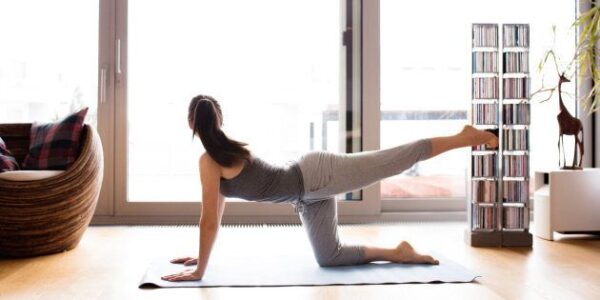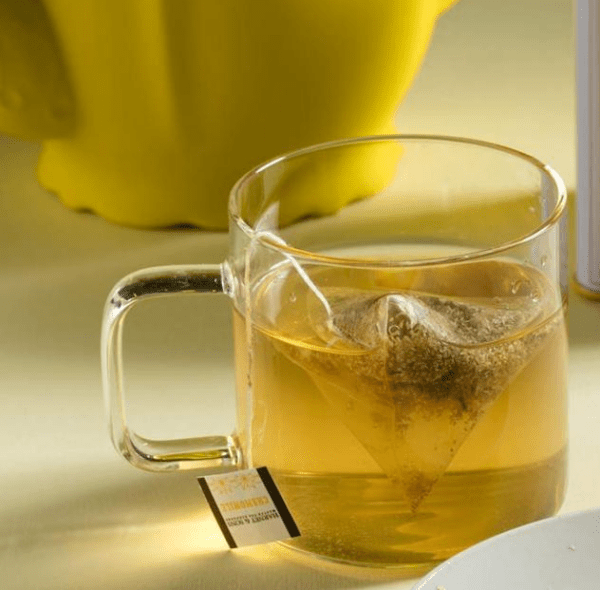
Seven Exercises You Can Do at Home During Your Coffee Break

Although more of us are returning to the office, many businesses still offer hybrid or remote working to access better talent, which may have been off the table in the past due to geography.
Employees are also choosing to find the ideal work-life balance, leading to more candidates applying for jobs working from home than pre-2020 levels. Home working is okay, but it encourages a sedentary lifestyle, which comes with its risks. This article explains some of these risks and how to avoid them.

Why you need to stay active
- To avoid diseases.
- It is a natural mood lifter.
- It keeps you physically fit and able.
- It helps to keep the doctor away.
- Lower blood pressure.
- Boost good cholesterol.
- Prevent bone loss.
What can you do to move more?
Going for a walk or running is great when you work from home. However, if you want to exercise during your coffee break, time is limited, so you can do it by giving yourself small but regular exercises throughout your working day. In the following section, we outline seven helpful exercises that you can do at home.
What seven exercises can you do at home?
Having some practical exercises you can do at home is essential. We have considered many of the best options and chose seven because they can use body weight alone. You can support these exercises with additional equipment, such as weights or a mat, but you can perform these alone and without other equipment. However, if you are looking for fitness equipment or fancy a Gym for your home, Mirafit and Amazon are excellent fitness equipment retailers.
One – Pressups:
An exercise that can be increased or decreased in difficulty. To simplify, the exercise, it is possible to perform press-ups from your knees. To increase the difficulty, you can go to your toes or spread your arms or increase the number of repetitions to add extra difficulty. Pressups work your shoulders, some core and chest.
Two – Planks:
Brilliant for the core; planks are challenging for everyone. The primary control here is that you can increase the time you plank to increase difficulty. Stomach muscles, back and shoulders are worked in this exercise.
Three – Mountain Climbers:
Working the shoulders, abs, legs and back as they all work to support and brace you. Mountain climbers are superb for a high-energy workout. You can do them quickly, and they get your blood pumping.
Four – Squats:
Squats are helpful because they work the quads at the top of the thigh. Using a large muscle like the quad means excellent calorie burn. Squats are beneficial for the getting up and sitting down movement at your desk.
Five – Star Jumps:
Star jumps are a fun way to burn calories, and you use the large leg muscles and your shoulders, pecks and triceps. The action of jumping builds strength in the legs and lower back. While lifting your arms above your head works the shoulders and upper chest.
Six – Burpees:
No one’s favourite… But stretching and getting back up improves all the right muscles, making this one of the best exercises for general fitness and mechanical improvement.
Seven – Yoga:
Yoga is perfect for muscle condition and mobility. Doing yoga at home can provide considerable benefits to your mobility and flexibility, which helps you to perform day-to-day tasks. It also enables you to avoid injury if you do other exercises at home. Yoga or stretching should form the foundation for your exercises and can be brilliant to start and end your day.
How can coffee break exercise help you?
Getting your heart rate up increases blood flow around your vital organs, flushing them with fresh blood, nutrients and essential hormones. Exercise can burn calories, reduce weight, or at least condition your joints and tone your body. If you are not getting out and travelling to work, you miss the opportunity to move. Often, the best ideas come after a workout, and this is because the blood rushes to the very tips of your brain and livens up all of the cells and electrical charges thanks to blood flow and hormones.
Next steps
Make yourself some tasks or a plan, and then reward yourself for completing those tasks. Performing exercises while moving around is constructive because it increases the intensity without impacting your day too much.
Exercise examples:
Breakfast Yoga – Stretch yourself before or gently after breakfast to prepare for the day. Yoga will help stretch out those niggles and promotes a sense of well-being.
Coffee Break – When you go to the kettle to make your favourite hot beverage, drop and do ten press-ups. Increase the numbers once you have done this for a week or so. Repeat whenever you go for a drink.
Toilet Break – Next time you go for a comfort break, take the opportunity to do 15 situps and then ten crunches. If you are drinking enough, then you will be sure to get plenty of situps in during the day.
Start a new task star jumps – When you go to start a new task, stand up and star jump at least five times. Again it is very likely that you will work on 5-6 tasks per day so you will get the jump on your exercise.
Why fitness is key:
Exercise is linked to memory, mental health and happiness. If you consider the health benefits of functional fitness, which is especially important when sitting at a desk, then memory improvement is an additional bonus. Being mentally fit will bring joy to your life, and exercise releases hormones, improving your mood. Shed toxins and stress by working up a sweat. Consider drafting your own home exercise goals using some of the exercises outlined above.
Final thoughts:
Whatever your age, choosing fitness will benefit your health. Start light, ease into your program, and stop if necessary. The more you can add to break up your day, the better, as short and frequent exercise is easier to manage and can be less challenging while still attributing to great results. You can effectively break it into bite-sized chunks and then find ways to increase intensity or effort. The results should be a happier, healthier and more confident you. Good luck, thanks for reading.












































